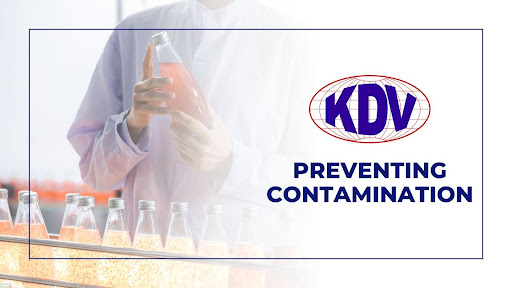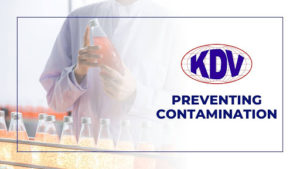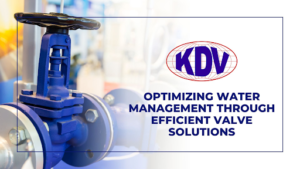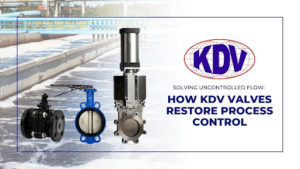Mitigating Contamination Risks in Your Industry with KDV Valves
Contamination is a persistent challenge in numerous industries, most notably in food processing, pharmaceuticals, and chemical manufacturing. Whether it’s harmful microbes, foreign particles, or cross-contamination between products, these unwanted elements can cause serious safety hazards, devastating product recalls, and financial setbacks. Fortunately, KDV Valves offer a robust solution to protect your processes and ensure the integrity of your products.

Understanding Contamination: A Threat Across Industries
Contamination comes in various forms:
- Microbial Contamination: Bacteria, viruses, and other microorganisms can lead to spoilage and significant health risks if present in food, beverages, or pharmaceuticals. These microorganisms can thrive in poorly maintained pipelines, storage tanks, and processing equipment, making rigorous contamination control essential.
- Chemical Contamination: Chemicals from cleaning agents, equipment materials, or other sources can compromise product safety and quality. In industries with strict regulatory requirements, such as pharmaceutical manufacturing, even trace chemical residues can lead to non-compliance and product recalls.
- Physical Contamination: Foreign objects such as debris, packaging elements, or equipment fragments can adulterate products. These contaminants often originate from worn-out machinery components, improper material handling, or inadequate filtration systems.
Cross-contamination happens when one product inadvertently mixes with another, potentially causing safety concerns (e.g., allergens) or affecting product characteristics. For instance, in food production, cross-contact with allergenic ingredients like nuts or dairy can pose serious health risks for consumers with allergies. Product quality and consumer safety are always at stake when contaminants make their way into the process stream.
How KDV Valves Can Help: A Hygienic Solution
KDV Valves are designed with contamination prevention as a top priority. Their hygienic construction combats potential breeding grounds for bacteria and other contaminants:
- Specialized Seals: KDV utilizes seals like EPDM and PTFE, known for their durability, chemical resistance, and ability to provide leak-proof operation, minimizing contamination risks. These seals are widely used in high-purity industries such as biopharmaceuticals and food processing, where maintaining sterility is non-negotiable.
- Smooth Surfaces: The smooth internal surfaces of KDV Valves significantly reduce the chance of product build-up, making cleaning easier and more effective. This feature is particularly beneficial for industries with stringent CIP (Clean-in-Place) and SIP (Sterilize-in-Place) protocols.
By integrating these design features, KDV offers a wide array of hygienic valve types tailored to a diverse spectrum of industry needs. These include diaphragm valves for aseptic processes, butterfly valves for efficient flow control, and ball valves for high-pressure applications.
Key Considerations for Optimal Contamination Prevention
- Material Selection: Using the correct valve materials compatible with the fluids and conditions of your processes is crucial. KDV offers valves constructed from FDA-approved and non-reactive materials, ensuring their integrity and safeguarding your products. Selecting the right material also prevents leaching of harmful substances into the product stream, maintaining purity and compliance.
- Cleanability: KDV valves prioritize ease of cleaning. Their smooth design and high-quality materials allow for thorough and efficient cleaning, minimizing the risk of contamination between production runs. Frequent maintenance and proper sanitization procedures further enhance valve longevity and contamination control.
KDV Valves provide a solution to mitigate the threat of contamination – safeguarding your products, brand reputation, and consumer safety. By prioritizing hygienic design and utilizing appropriate materials, KDV Valves are instrumental in maintaining a contamination-free environment throughout your processes. Adopting a proactive contamination prevention strategy with KDV valves can help industries avoid costly recalls, ensure regulatory compliance, and enhance overall operational efficiency.
Frequently Asked Questions (FAQs)
1. How do KDV valves prevent microbial contamination in high-risk environments?
KDV valves are designed with hygienic sealing systems, smooth internal surfaces, and minimal dead space, reducing bacterial growth and product buildup. They comply with industry standards such as CIP (Clean-in-Place) and SIP (Sterilize-in-Place) protocols, ensuring contamination-free fluid control in industries like food, beverage, and pharmaceuticals.
2. What materials are used in KDV valves to ensure chemical compatibility and prevent contamination?
KDV valves are constructed from FDA-approved, non-reactive materials such as stainless steel (316L), EPDM, PTFE, and other high-performance elastomers. These materials prevent chemical leaching, resist aggressive cleaning agents, and maintain purity in critical applications like pharmaceutical manufacturing and biotechnology.
3. Can KDV valves be integrated into automated process control systems to enhance contamination monitoring?
Yes, KDV offers pneumatically and electrically actuated valves that integrate seamlessly with PLC (Programmable Logic Controller) systems and Industry 4.0 solutions. Smart valve monitoring can detect leaks, pressure deviations, and flow inconsistencies in real time, providing early warning against potential contamination risks.
4. How often should KDV valves be inspected and maintained to ensure contamination control?
Routine maintenance depends on operating conditions, media type, and industry regulations, but best practices recommend scheduled inspections every three to six months. Regular seal replacements, cleaning cycles, and pressure testing ensure optimal performance and prevent contamination-related failures.
5. Are KDV valves compliant with international hygiene and contamination control regulations?
Yes, KDV valves meet stringent industry standards, including ASME BPE, 3A, FDA, ISO 9001, and HACCP. These certifications ensure that KDV valves are suitable for industries where contamination control is critical, such as dairy processing, brewing, pharmaceuticals, and water treatment.
If you wish to explore KDV Valve solutions in greater detail or receive advice on application-specific needs, don’t hesitate to reach out to KDV.
Download our white paper: “The Essential Guide to Contamination Prevention with KDV Valves” or schedule a consultation to discover how KDV Valves can optimize the safety and quality of your processes.


